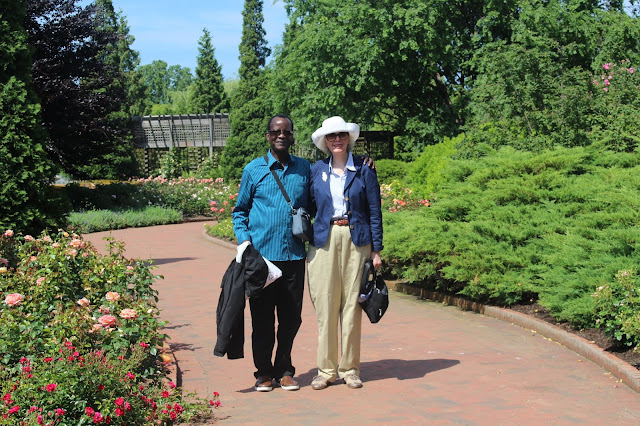Summer Solstice
is the longest day of the year in the Northern Hemisphere and officially marks
the first day of summer. It also occasions the first day of winter in the
Southern Hemisphere which gets the shortest day of sun.
This year’s
summer solstice was on June 21st, a few days after which I made my
way with friends Robin and Jolly to the Chicago Botanical Garden.
It’s a place
I’ve visited before. But since it’s no less than 385 acres of exquisitely landscaped
gardens, it’s no wonder people like me go back often to witness its natural
beauty.
And
especially at the height of the Chicago summer when everything is in full-bloom,
it’s a treat to see so many natural sun-kissed colors all enveloped in seas of
shaded green.
Of course,
those 385 acres include a number of waterways. Or more precisely put, the
Garden itself is situated on and around nine islands inside the Skokie River
Corridor. Sometimes described as a ‘living plant museum’, the Garden is actually
made up of 27 displays or mini-gardens which you can walk around using a myriad
number of nature trails.
Or you can
take the open-air electric tram which snakes its way all around the outer edge
of the Garden, stopping off at the Education Center established in 1976 and now
known as the Regenstein Center. It also passes by the Rice Plant Science Conservation
Center where one can find nine laboratories and a science Library containing
scads of rare botanic books.
The Garden,
which is owned by the Forest Preserve of Cook County but is actually run by the
Chicago Horticultural Society, only broke ground in 1965, just over a half
century. But it only opened to the public in 1972 after having enlisted a host
of high-powered horticulturalists and landscape architects to create what could
very well be one of the wonders of the world.
I have yet
to see all 27 gardens but the one I wanted especially to view again was the
renowned Japanese Bonsai Tree Collection. The Bonsai are the gracefully shaped ornamental
mini-trees, some of which are dated between 600 and 1000 years old! No joke!
My friend
Robin, seeing I loved the Japanese motif which somehow has its roots embedded
in the religions of Shintoism and Buddhism, steered me towards the three
Japanese landscaped islands which one can only visit by crossing a zig-zag
bridge and then trek across another one. But the third island was said to be ‘sacred’
so nobody but the grounds-keepers could tread on it. We could only look.
I was
satisfied since there was still enough light to go and see the Aquatic Garden
as well as the English Walled Garden and even the Dwarf Conifer Garden. There
was even an elegant display of orchid paintings inside the Regenstein Center
which my other friend Jolly (from Kenya) was equally enthralled with.
But before
we could leave, we had to walk around the Rose Garden which is one of Robin’s
favorites. What we saw was a wide spectrum of colored roses, nearly all of which
were in full bloom. But since the summer solstice had just passed and the sun
was gradually shifting into cooler hues, a few of the blooms were already
fading. That’s how fragile these flower can be.
The one
other feature of the Garden that I wanted to investigate was the
larger-than-life bronze sculpture situated squarely in the heart of the Garden.
It was a youthful interpretation by the American sculptor Robert Berks of the
Swedish botanist Carolus Linnaeus (1707-1778). Linnaeus is the scientist
considered the Father of Taxonomic Botany. That means he invented a system for
naming and classifying plants according to their genus, species, Latin and
common names. It’s thanks to him that virtually all the plants in the Garden are
labelled for curious people like me to check out and actually read.
One of my
favorite plant labels that we passed by on our way to the Walled Garden was the
Black Coral Elephant Ear Araceae. In fact, those leaves really looked like
elephant ears.
So as we
walked across one last bridge leading to the mainland (which itself is just
down the road from one of the five American Great Lakes, Lake Michigan), we
felt refreshed having had an afternoon of clean air, organic as well as
artistic beauty and fellowships with friends, one of whom I’d see soon back in
Nairobi.











No comments:
Post a Comment